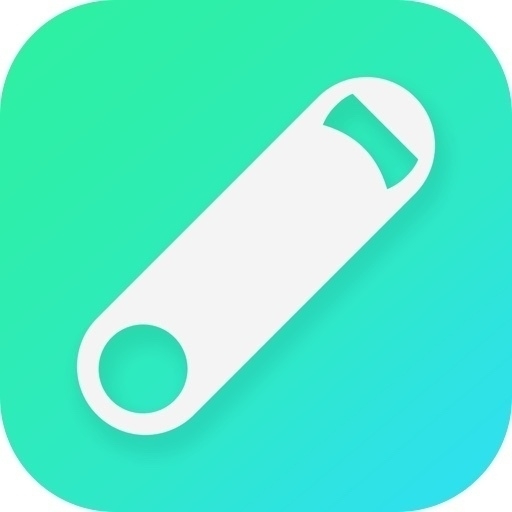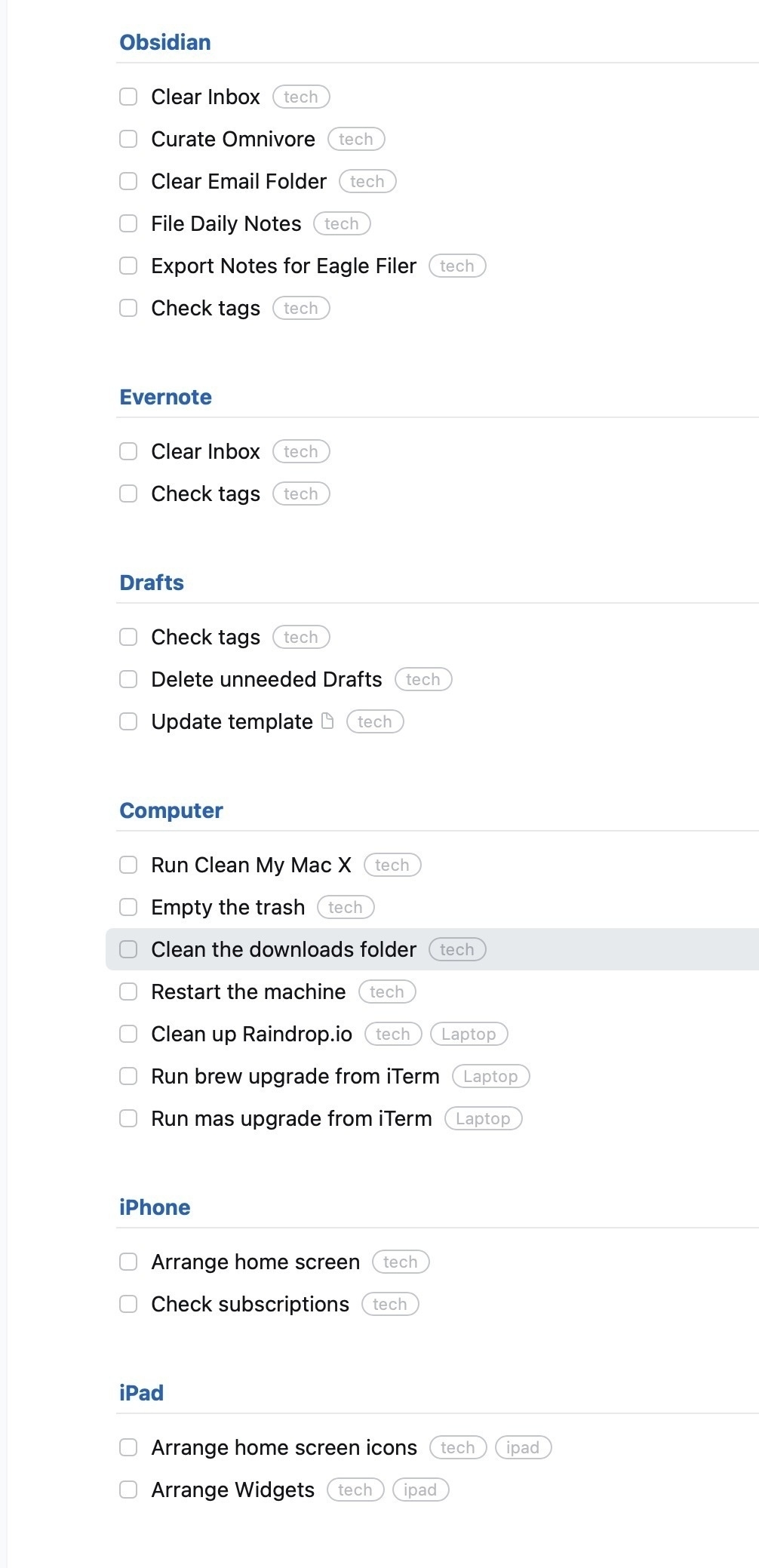Apps
- A scratchpad for temporary text snippets
- Published blog posts
- Bookmarks via Raindrop.io
- People you work with (co-workers)
- Customers/Clients
- A record of your daily appointments
- Weather reports
- Restaurants where you’ve eaten
- Recipes
- Watched YouTube videos
- Watched movies
- Watched TV shows
- Music you’ve listened to
- Games you’ve played/bought
- Apps you want to buy
- Receipts via email
- Apps you own
- Analytics reports from your web site or blog
- Registration info for software you’ve purchased
- A record of interactions with your family members who live separately
- Random photos
- Saved blog posts from writers you like
- Phone numbers and contact information
- Two Factor Authentication backup codes
- Copies of your insurance cards
- Lyrics to your favorite songs
- Profile pictures to use on web sites
- Your bank routing number
- Podcasts you want to subscribe to
- Books you’ve read/want to read
- Vacation plans
- Your favorite memes
- Copies of vital documents like birth certificates, marriage licenses etc.
- A copy of your resume
- Your current and past goals
- A copy of your will
- A copy of your healthcare power of attorney
- The random poem you’ve written
- Cue sheets for long bicycle rides
- Jokes you want to remember
- A list of things you love
- A record of completed tasks from your task manager
- Your favorite quotes
- Transcripts of your Q&As with ChatGPT or Google Gemini
- Saved emails
- Notes from training you’ve attended
- The encryption key for Bitlocker or File Vault
- A brag document for your job
- Technical “How to” documents for computer related tasks
- Non-vital passwords
- Wifi passwords
- Imported web pages from your read it later service
- RSS feeds from your favorite blogs
- Software manuals
- Appliance manuals
- Default settings for your computer
- A record of your Amazon purchases
- End of the year “Best of” articles to check out on books, TV, podcasts, movies, articles
- Screenshots of social media posts you like
- Purchasing wish list
- Templates for various dataview queries
- Terminal or Powershell commands too complicated to remember
- How to write in Markdown
- Search tips, syntax and operators for your favorite search engine or AI
- API Keys for various web services
- Templates for your Obsidian plugins
- Templater snippets
- All the topics in your quotes collection
- Drafts blog posts
- A history of your social media posts
- A “To Watch” list for YouTube and television
- A daily gratitude list
- A record of new things you’ve learned
- Alarm codes for your relative’s houses
- A dataview query for notes created today
- A dataview query for notes modified today
- Waypoint Folder Notes for your important folders of notes
Today on AppAddict - Forget all the fancy apps, Raycast, the Google Gemini website, all the AI stuff on SetApp, because my favorite way to conduct a Q&A with a LLM is using this free Apple Shortcut that has a customizable prompt, transcripts and more.
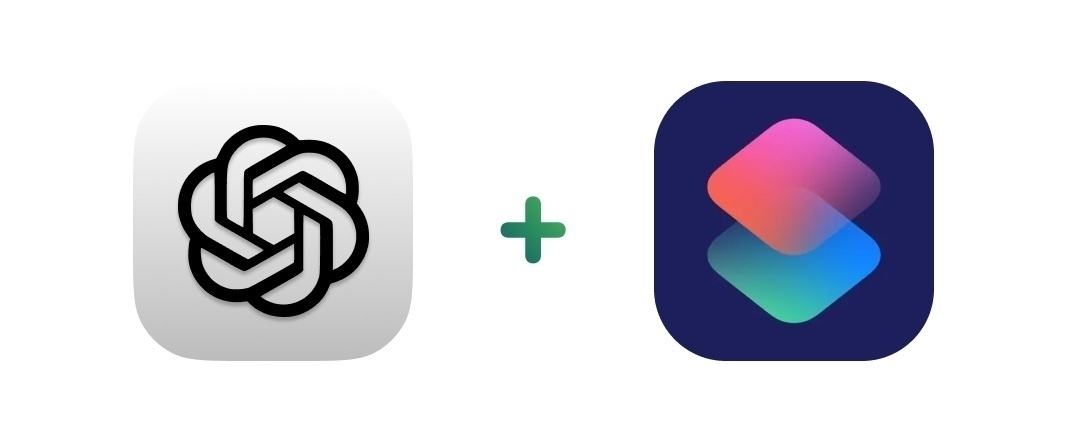
Automating #Obsidian - Generate Notes About Your Media Consumption via RSS - Books, TV, Movies, Music

Automation
How would you like to have notes automatically created for you in Obsidian to keep track of your media consumption? You could then add your own thoughts, reviews or any other information you wanted to the note. Many apps and services you may already be using generate RSS feeds when you use them to record your habits. Among these are Trakt for television shows, Letterboxd for movies,Last.fm for music and Goodreads for books. There is no need for an intermediate service like IFTTT or Zapier and you don’t even need a subscription to an RSS provider like Feedly.
Just One Plugin
You just need to install the community plugin RSS Copyist and follow the directions to set it up. Basically you create a folder called RSS at the root of your vault with subfolders for each feed you want to follow. Using the provided template, you create a note for each feed that specifies the URL, default tags and other configurable information. The template even contains a prewritten Dataview query to create a MOC for you, complete with images.
There are two other community plugins for RSS. You can experiment with these and see if you prefer them.
I feel like it would be a good idea to budget some time each week just for the forums I belong to for different software titles and web sites: Drafts, #Obsidian, Actions for Obsidian, OMG.LOL, the Automators Podcast, Tidbits, AppleInsider, Keyboard Maestro and Hazel. Good stuff to be learned there.

My Top 10 Keyboard Maestro Macros
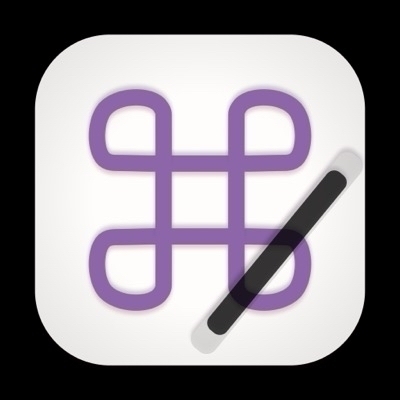
Keyboard Maestro by Stairways Software is the preeminent automation application for macOS. It acts on nearly 30 triggers to perform almost any Mac function you can think of. It can launch tasks, control applications and manipulate text and images. It’s easier to demonstrate its powers than to explain them, so I’ll share my top 10 macros.
1. Add Today’s Task
This is an example of a macro that runs an iOS shortcut, in this case one that adds my most important task of the day to my Obsidian daily note. I launch it with a keyboard shortcut.
2. Sync Obsidian Vault
This macro uses a time of day trigger to launch Sync Folders Pro every morning at 2am. That application then runs an automated sync of my Obsidian vault to my Google Drive folder where it gets uploaded automatically into the cloud. Keyboard Maestro shuts the program down five minutes later.
3. Create Daily Checklist in Drafts and Copy to Things 3
Every evening I trigger a macro from my menubar to use a template in Drafts to create my daily checklist in Things 3, complete with the due date, tags and areas. Mike Burke wrote a great piece on how to create the template for Things in Drafts.
4. Eject Backup
My daily driver at home is a M2 MacBook Air. Every night before I go to ned, I plug in a backup drive so that Time Machine can do its thing while I sleep. Every morning, 30 minutes before my alarm goes off, a time of day trigger causes a macro to execute that runs an AppleScript to eject the drive, so that when I start work in the morning, all I have to do is physically disconnect it.
5. Morning Apps
Every morning, right before I wake up, Keyboard Maestro launches my browser, Obsidian, Fantastical and the Photos app. That way I’m ready to start my daily note, keep up with my appointments and post a picture to Pixelfed, a daily habit.
6. Various App Launching Hotkeys
I use a hyperkey (CAPS LOCK) mapped as shift+control+option+command with Karabiner-Elements in combination with a hotkey to launch a variety of my most used apps, Edge, Drafts, Things, Bartender, Path Finder etc. All of that runs through small Keyboard Maestro macros.
7. Quit All Applications
At the end of a work session on my computer, I hit control+shift+Q and it quits all my open apps. That way everything can back up properly and I don’t have to worry about open files.
8. Uninstall Apps
When I launch App Cleaner, it serves as a macro that arranges the windows on my computer automatically so that App cleaner takes up the right of the display and Path Finder, opened to the Applications folder, takes up the left half. Then it’s just a matter of dragging over the app I want to remove.
9. Hide on Unlock
For privacy reasons, unlocking my computer triggers an Apple Script that hides all open applications. That way I don’t have to remember what’s on my screen nor do I have to worry about any prying eyes from nosy neighbors.
10. Window Management
I have mapped control-shift and the arrow keys to control window positions for top, bottom, left and right. I get more granular control using Raycast but for most cases Keyboard Maestro does just fine.
Today on AppAddict - a bargain if you can find it on sale, Alarm Clock Pro has multiple alarms, world clocks, timers, stopwatches, and automates emails, texts, program launches, web pages, sleep, wake, restart and shutdown. See the full review

Today on App Addict - Toy Viewer a fast, free and dependable replacement for Apple Preview when viewing graphics or making minor edits. See my review

Have you heard about the uninvited AI bloatware that Logitech injected into their Logi Options mouse driver last week? It’s objectively terrible and a resource hog to boot. I suggest switching to BetterMouse, an $8 superior driver with advanced features. Here’s my review
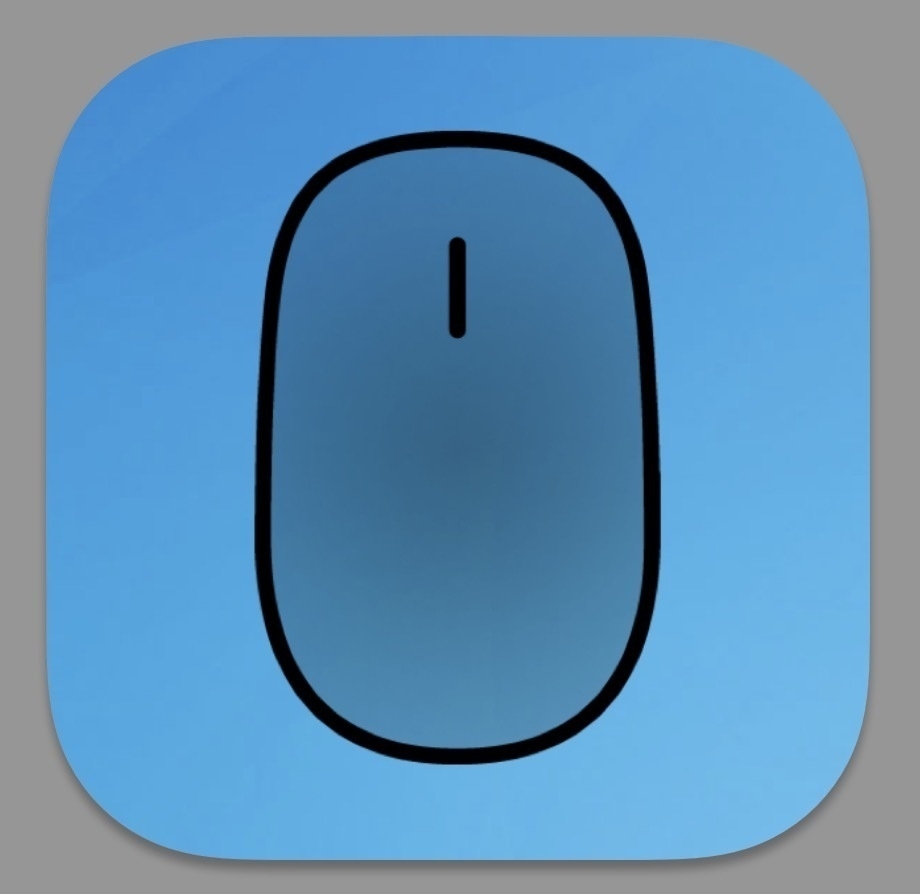
77 Types of Notes to Keep in #Obsidian

Today on App Addict, Backup Status, a notification center widget that gives you the status of your Time Machine backups at a glance. It’s the easiest way to keep up with the health of your backups. Just set it and forget it.
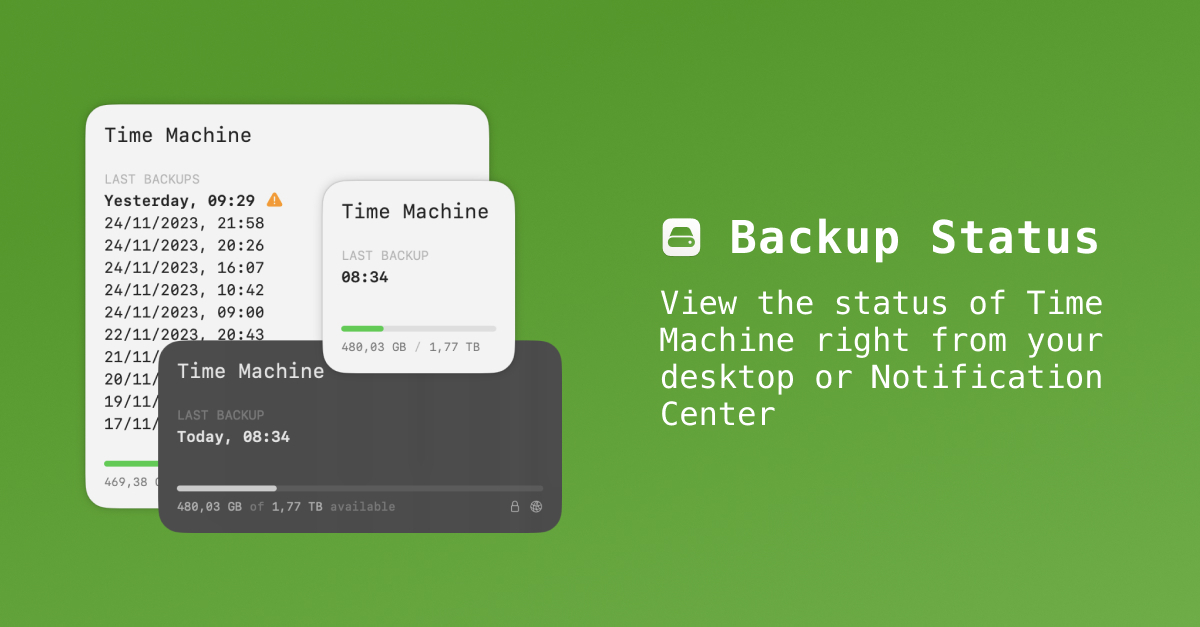
MyApplications is a database and launcher for all the apps on your Mac. It breaks them down by publisher and category, gives you detailed info on each app, its package content and system permissions. You can sort apps by date launched or by name. It’s 99 cents in the app store.
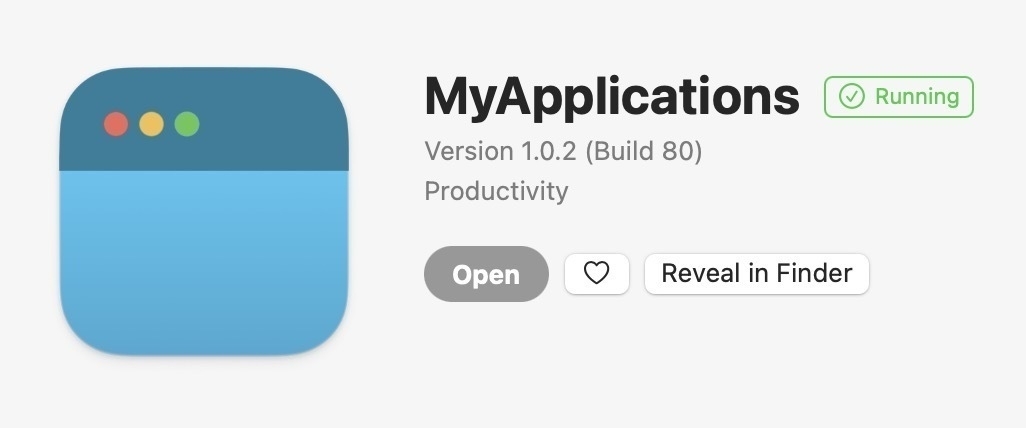
Path Finder by Cocoatech has been around as long as Mac OS X. Its dual pane file navigation and depth of features make it a must-have tool in my app belt. It is available on Setapp or by subscription or one time purchase without upgrades.
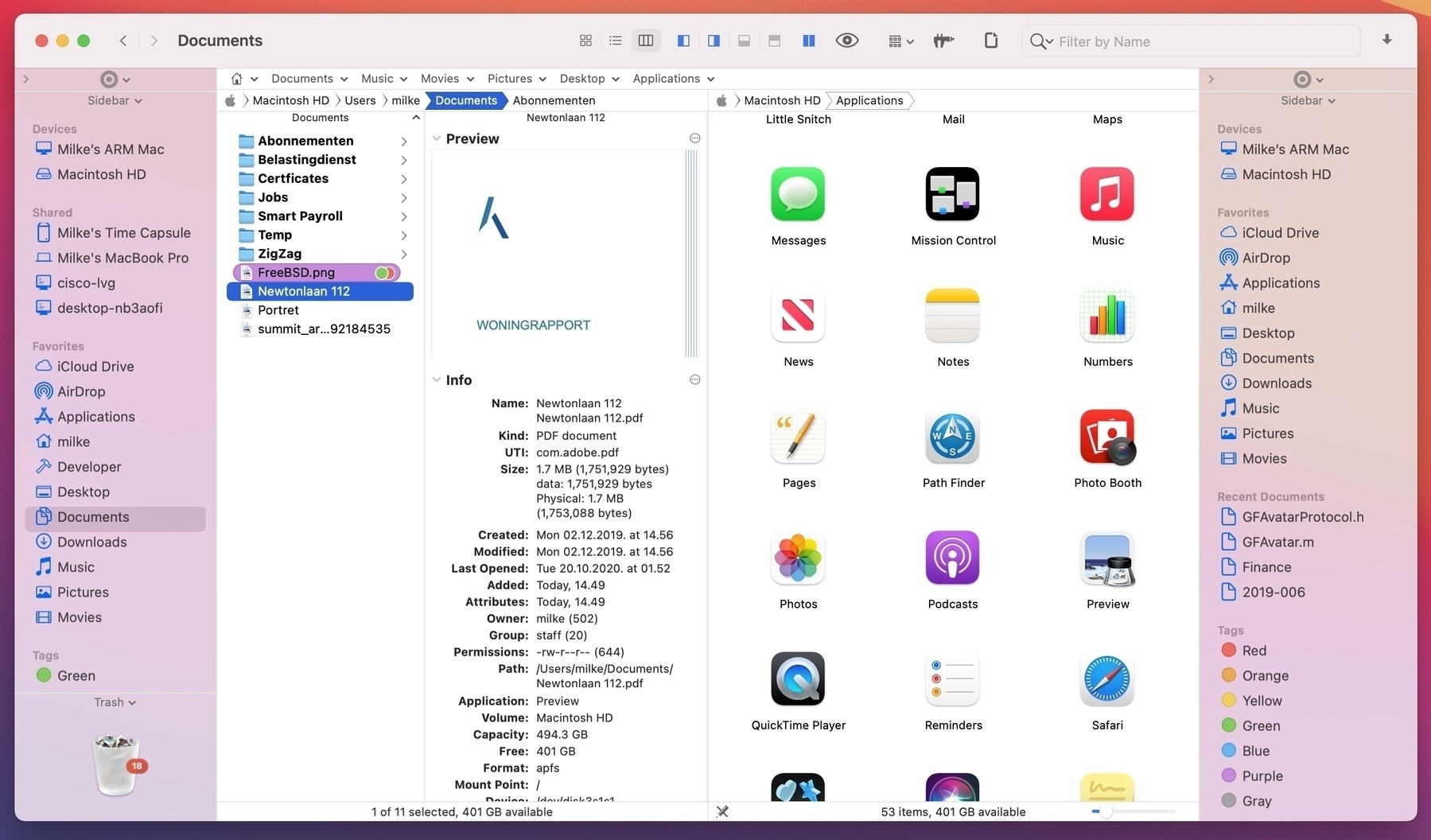
Mac people - excluding Apple’s own apps, what software have you been using the longest? For me it’s going to be BBEdit (released in 92) and ToyViewer (released in 95), both of which I’ve used since the 90s. Honorable mention to Launchbar and PathFinder.
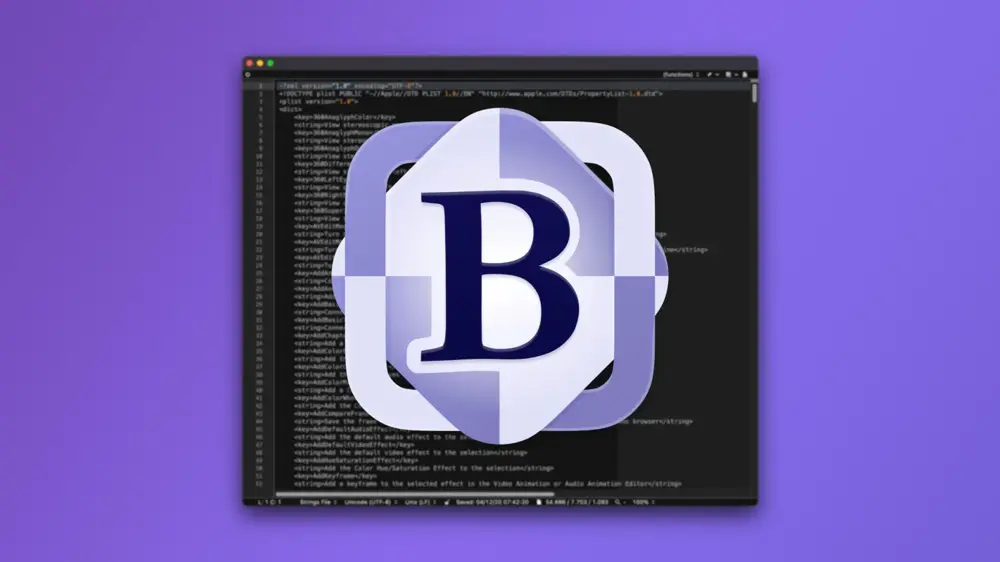
My 10 Favorite #Raycast Use Cases (and all the apps it replaced)
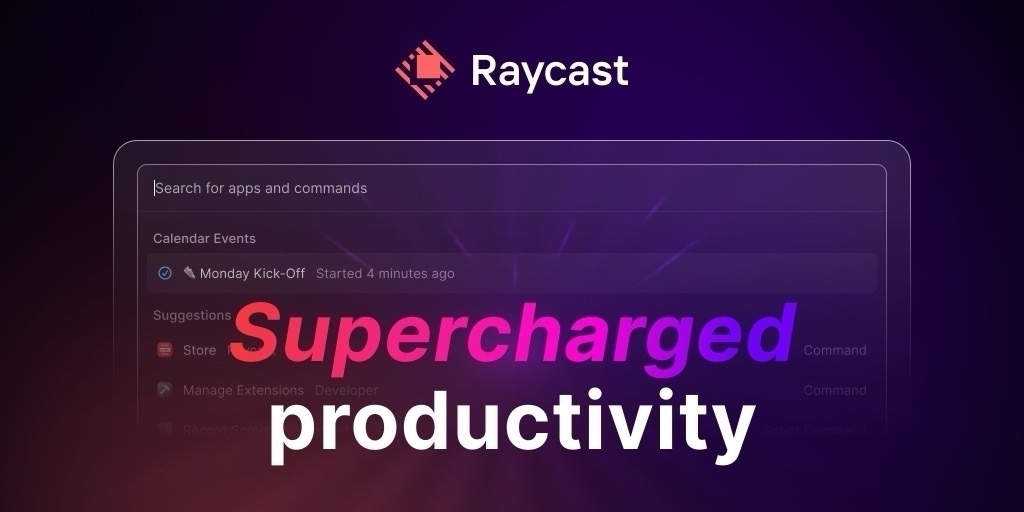
I’ve been using a keyboard driven application launcher since 2006. For the majority of that time, I was a devout Launchbar fan. installing it on Mac after Mac and dutifully paying for the infrequent upgrades. When I initially heard about Raycast, I wasn’t interested, but the uproar just kept getting louder. Tech bloggers and Reddit sang its praises and kept pointing out new features one after another. I finally relented and downloaded it. After spending my Thanksgiving break of 2023 getting it configured to match my needs, I’ve been an enthusiastic proponent ever since. I’m a paid subscriber, mostly to keep my setup synced between my two computers but also to take advantage of the many AI features only available to pro users. Not to fear though, absent AI and sync, almost everything else is included in the free version.
1. Clipboard History
I used to use Pastepal and at times I miss its ability to sync my clipboard with my phone, but there are work arounds for that. By using Raycast’s built in clipboard manager, I eliminate the need to run a separate program at all times. It’s very convenient to assign a hotkey combo to show my clipboard history and then to navigate it without the need for a mouse.
2. Kill Process
When I have the infrequent application crash, I don’t have to remember the Apple keyboard combo for force quitting an application nor do I have to use a mouse to click on the dock or Apple Menu. I just launch Raycast and type “Kill Process” and then the name of the rouge program and hit enter. Boom, just like that the crash is over and I can relaunch the application if I want to.
3. Image Modification
As a blogger, I have a frequent need to reduce the size of images before I post them on my website. The image modification plugin acts on whatever file is selected in the finder. I specify the width I want and it figures out the height for me. If I want to convert an image from a PNG to a JPG, it can handle that too. It can also pad and scale images as well as removing EXIF data.
4. Emoji Picker
I used to use Rocket, a separate program as an emoji picker but the one built into Raycast works just as well. I can select from my frequently used emojis or search all those installed. I can copy the result onto my clipboard or paste it into the active application. I use the hotkey fn+E to summon the emoji picker and I do it often 😃.
5. Unsplash
When I’m looking for a stock photo to use on my blog, I can use the Unsplash extension to do it right from Raycast without having to use a web browser. I can search and download a variety of images for free from the keyboard. I can search specific collections, my favorites or the entire catalog. I can even use Raycast to set my wallpaper to any image on Unsplash.
6. Brew
I no longer have to use the terminal to do maintenance on Homebrew, the Mac package manager. I can get a list of my installed and outdated casks and run the updates right from Raycast. I set a reminder in Things 3 to do this every weekend and I don’t have any issues keeping up with developer releases.
7. Google Search
In the age of AI, there’s still a lot to be said for searching plain old Google. I have a hotkey set to COMMAND+G to allow me to conduct a search wherever I am on my computer. The resulting window not only provides space to type a new search, it also shows me my history (which is erasable). I can open the Google page in my browser or copy the resulting URL to the clipboard.
8. Open Link in Specific Browser
Sometimes I come across a page that just won’t work in the browser I’m using. Using this Raycast command, I can choose another browser to try - Chrome, Arc, Edge - whatever. It doesn’t matter. it will take the URL I’m trying to open and send it to the browser of my choice.
9. Password Search
Raycast has plugins for most major password managers. I use LastPass (yes, I know about the breaches) but it works the same for 1 Password or Bit Warden. I can search for the password I need and either paste it into a browser window or copy it to the clipboard. No longer do I have to use a separate application or browser to get the password or secure not that I want.
10. Shorten URL
The Bitly plugin allows you to shorten URLs straight from the clipboard. Just highlight the URL in your browser’s address bar, invoke the Raycast command and you’re ready to paste the result into a document or social media post.
Honorable Mentions
Raycast quick links allow me to search YouTube, Amazon, NetFlix, HBO/Max, DuckDuckGo and Mac Updater right from the keyboard. I don’t use windows management tools that often, but when I do, they are built-in to Raycast, eliminating the need for yet another separate program.
KeyClu is a free app for aspiring power users. Once installed and running, all you have to do is press the command key twice to bring up a cheat sheet with all the keyboard shortcuts for the app listed on the display.
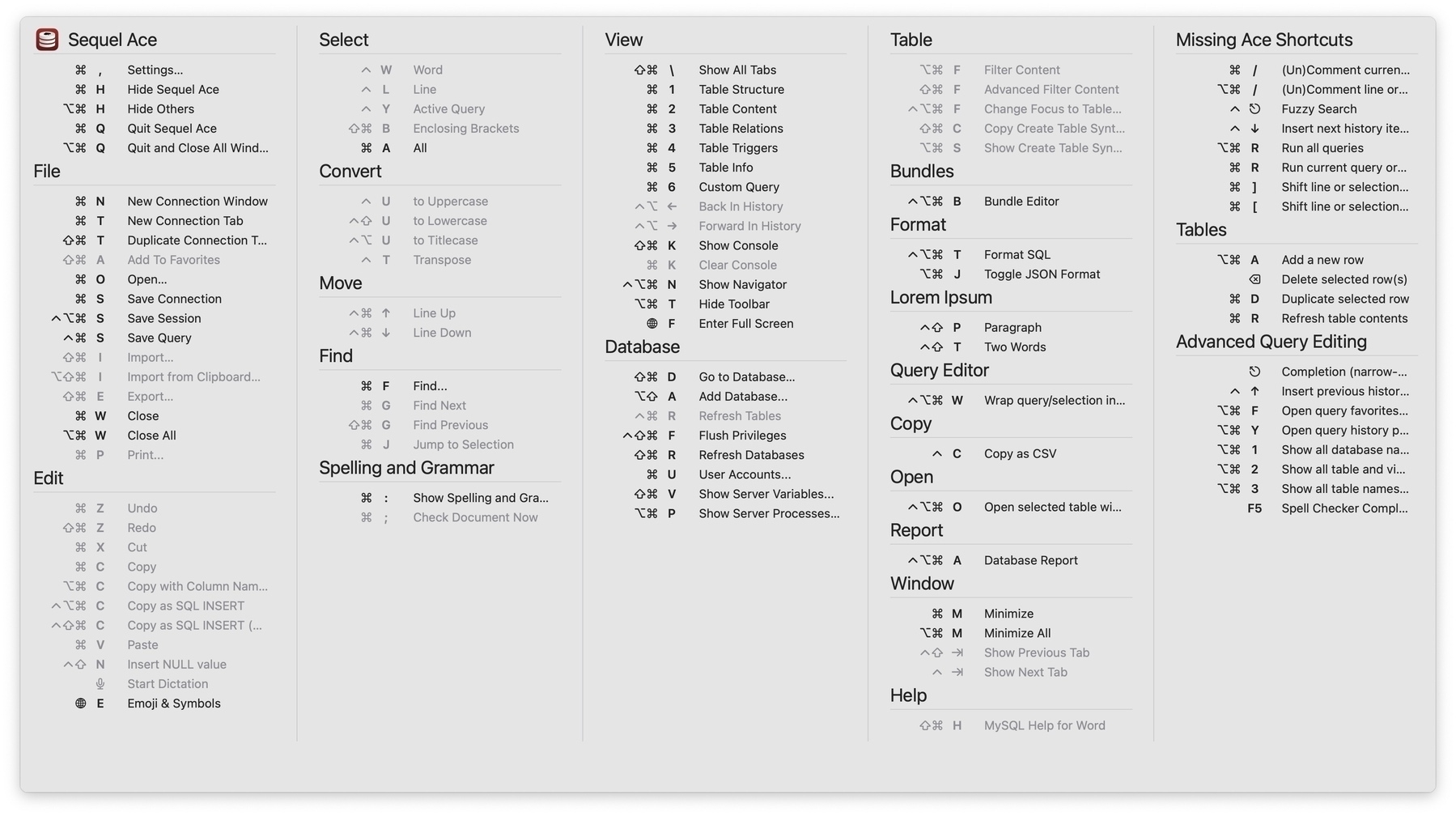
10 Lesser Known But Super Useful Obsidian Plugins
The most popular Obsidian community plugins, Excalidraw, Dataview and Advanced Tables have over a million downloads apiece. The Obsidian forums and Reddit are full of questions about the best ways to use them. There’s no doubting the power of these plugins and the value they add to Obsidian. But what about the lesser-known work of volunteer developers who make up the backbone of the devout Obsidian community? What about more niche cases and hidden gems? Let’s look at some of those. All of these have less than 50K downloads, some of them much lower than that.
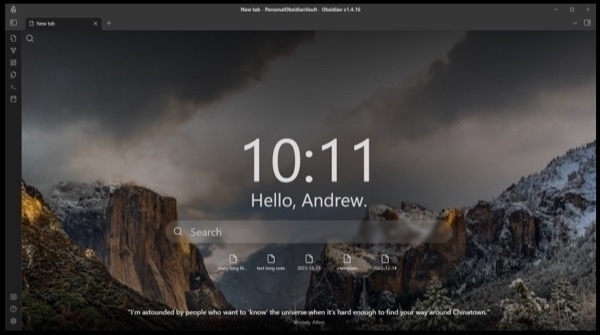
1. Beautitab
Beautitab creates a custom new tab page in Obsidian with customizable elective elements for search (with native search or Omnisearch), time, greeting, recent files and bookmarks to keep often used notes readily available. You can include a daily quote and an ever changing and beautiful collection of photographs as a background.
2. Local Images Plus
Local Images Plus downloads the images in web pages you add to you vault so that if the page is taken down or the URL changes, you still have the images to illustrate your notes. It converts images to jpg from png and makes sure you don’t have duplicates by using the MD5 hashing algorithm. It will also remove orphaned images from your vault. You can even use this plugin to localize images from existing notes.
3. Auto Note Mover
Auto Note Mover allows you to set rules that automatically move notes to the folders of your choice based on tags. You can also set up rules to manually move notes based on tags or you can include a file property yo exclude a mote from being moved. If the destination folder does not exist or if there is already a note with the same name, you will receive a warning and the note will not be moved.
4. Callout Manager
Callout Manager is a plugin that makes creating a configuring callouts easy. With it you can browse a list of available callouts, change the color of callouts, create custom callouts. As a bonus, it works on mobile.
5. Extract URL Content
Extract URL content works when you select a URL in a document and execute a command from the command pallet to replace the selection with the markdown content. Additionally, if you use a file property of link:, followed by a URL, the markdown content will be created. Finally, if you have multiple links in a note, you can run a command to have notes created for each URL in a separate folder.
6. Automatic Table of Contents
Automatic Table of Contents is useful for long and detailed notes. It will create a table of contents for you at the top of a note based on the headers you have used. If you make changes to the note, the table of contents will automatically change to reflect your input.
7. Media DB
Media DB is useful if you use Obsidian to track content consumption. You can search a movie, television series, anime, game, music release or wiki article by its name across multiple APIs. You can make customized templates in each category and even convert existing notes into Media DB notes using the API.
8. Raindrop Highlights
Raindrop Highlights imports your collected bookmarks from the Raindrop.io service along with your highlights into your Obsidian vault. You can import them all or selectively choose the folders you want to bring in. You have the option of running a sync process manually or having it run automatically. If you have decent JS skills, you can even use Nunjucks to create a template for custom front matter and the importation of content with your bookmarks.
9. Attachment Management
The Attachment Management plugin is central to my workflow for the importation of web content. It centralizes the location on attachments in a single folder with subfolders matching the structure of my vault. It renames images to match the note names they are a part of. It works well with the Local Images Plus plugin. If you have folders where you don’t want the attachments moved or renamed, setting up exclusion rules is easy.
10. Waypoint
Waypoint is an Obsidian plugin that automatically generates tables of contents/MOCs within your folder notes. Once a waypoint is generated, it’ll automatically link to every note within the folder and its subfolders. The Waypoint plugin will detect when you create/rename/move/delete a note and automatically stay up-to-date.
Custom Shortcuts by Houdah Software is a free Mac application that allows you to assign your own keyboard shortcuts to any menu item in any application.
Back in the days of the pre-OS X classic Mac OS, you could configure the Apple Menu to serve as an app launcher and conduit to the folder system. XMenu, a free utility from Devon Technologies offers the same functionality.
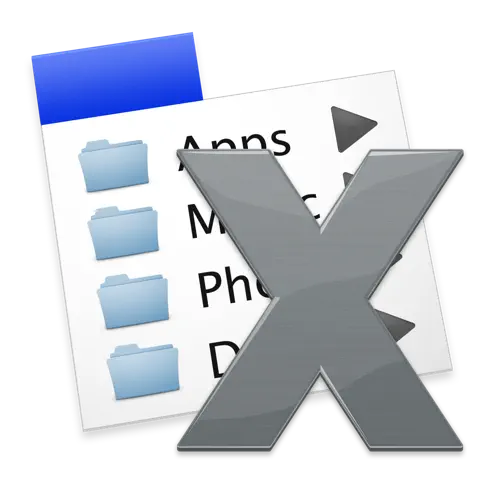
Apparency by Mothers Ruin Software is an app that also serves as a plugin for the macOS QuickLook feature. After installing Apparency, you can select an app in the Finder, press the spacebar and get a variety of information in the resulting window.
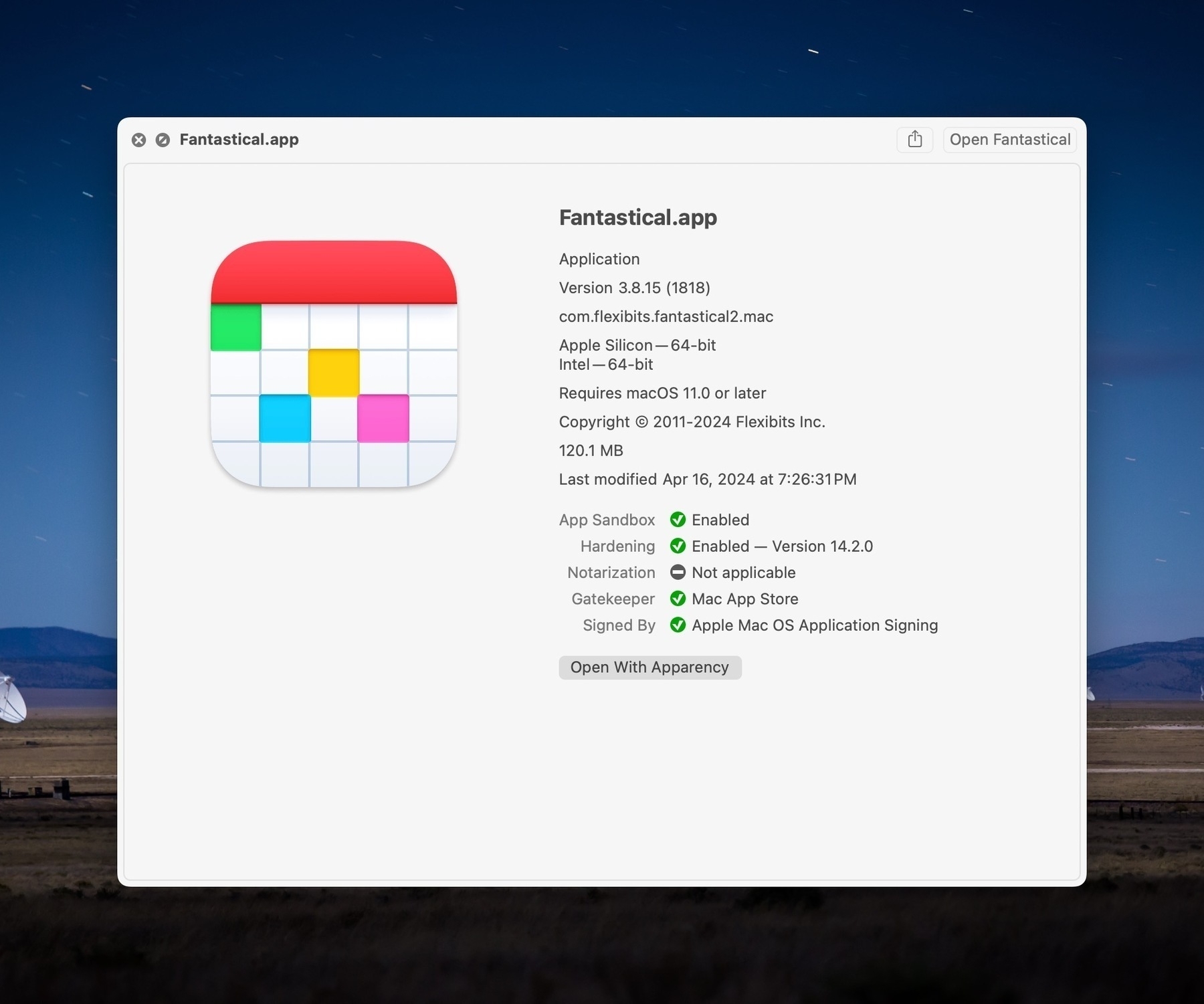
If you use more than one browser or non-standard apps for things like YouTube, getting links to open in the app of your choice can be a pain. Using Opener by tijo inc., you can force links to open where you want them, not where your phone thinks they should open.
